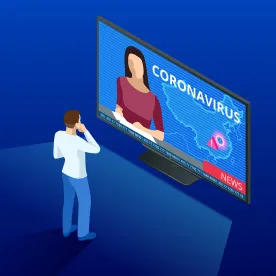The U.S. Centers for Disease Control and Prevention (CDC) has refined its guidelines regarding what is considered a “close contact” exposure to COVID-19. In previous guidance, the CDC defined a close contact exposure as being within six feet of an infected person for 15 consecutive minutes or longer, though the CDC noted that this was a rule of thumb and other factors could influence the likelihood of exposure. On October 21, 2020, the CDC updated its guidance to state that a person should be considered to have had a close contact exposure if the person was within six feet of an infected individual “for a cumulative total of 15 minutes or more over a 24-hour period.” (Emphasis added.) The CDC continues to recommend determining such close contacts starting from two days prior to the infected person’s onset of symptoms or positive COVID-19 test, whichever occurs first, until the time the infected person meets the CDC’s criteria for discontinuing home isolation.
While on the surface this may not appear to be a significant change, the revised guidance may have a substantial impact on employers’ COVID-19 mitigation practices in the workplace. For example, under CDC guidelines and many state and local guidelines, individuals should be quarantined for 14 days after having had a close contact exposure or otherwise having been exposed to COVID-19. Accordingly, many employers rely on social distancing and other precautions in the workplace to minimize or eliminate the instances in which employees are within six feet of each other for 15 minutes or longer. The overall goal of these distancing practices is minimizing the number of employees who may be affected by quarantine requirements in the event someone in the workplace becomes infected.
Under previous guidelines, employees who were briefly (i.e., for less than 15 minutes) within six feet of an infected individual would not have been considered to have had close contact and therefore would not need to quarantine for 14 days. Under the revised guidelines, in order to determine who has had a close contact exposure and thereby should be sent home for 14 days to self-monitor for symptoms, employers should attempt to determine the cumulative amount of time that personnel were within six feet of an infected individual over the course of a 24-hour period. In many work environments, this change will increase the number of employees whom employers will need to send home for quarantine following a COVID-19 case. (Under the CDC’s critical infrastructure guidelines, employers may continue to permit critical infrastructure workers to work onsite following such an exposure as long as the exposed workers remain asymptomatic.) It is likely most state and local health authorities will update their respective guidelines accordingly.
The bottom line is that employers may want to review and update their COVID-19 prevention and mitigation procedures in two distinct ways to account for the revised definition of close contact:
- First, when faced with a COVID-19 case in the workplace, employers now may want to determine whether anyone was within six feet of the infected individual for a cumulative amount of time of 15 minutes or longer during any 24-hour period going back two days prior to the infected individual’s developing symptoms or testing positive for COVID-19 (i.e., the date the test specimen was collected, not the date results were learned), whichever occurs first.
- Second, to the extent employers are proactively trying to minimize the time employees are within six feet of each other, they must take into account not only the duration but also the frequency of such encounters. For example, if employees previously met in a small conference room for 10 minutes each day to discuss work issues, the employer may want to change the frequency of such meetings to every other day.




 />i
/>i

